Building Blocks Needed to Thrive in the Workplace

Why do future-focused organizations still struggle to define what they believe is the workplace of the future? And why, according to the 2017 Global Human Capital Trends survey, do only 11% of survey respondents believe that they understand how to build the organization of the future?
Well, for starters, there are still a number of organizations out there that are operating according to industrial-age models and are thus tied down by legacy systems, processes, and behaviors.
Secondly, designing the workplace of the future through organizational change is both complex and highly demanding. Not only that, but there are several major IT challenges that management must address.
The Global Human Capital Trends survey indicates that many organizational redesigns either fail because (a) they are simply reduced to a cost-cutting endeavor or (b) there is resistance to change from company leadership.
On the other hand, there are many organizations attempting to reimagine and change the workforce into a place where people and machines are integrated into a hyper-efficient ecosystem where simple tasks no longer exist and the only thing left is an exceptional talent that performs at a highly productive level at all times.
While this can be an admirable goal, the truth is, continuously trying to change something is frustrating and overwhelming for all parties involved. Restructuring and redesigning often comes down to numerous trials and errors, and with constant talk of change and automation in our jobs, the workplace of the future does start to sound like an undesirable place filled with uncertainty.
In fact, “more than 70% of Americans express wariness or concern about a world where machines perform many of the tasks done by humans,” according to the Pew Research Center.
But, despite the uncertainty, designing for the workplace of the future is also exciting and if done correctly, the rewards will be tenfold in terms of financial gains, employee engagement, productivity, and much more.
Where should you begin with designing and building for the workplace of the future?
As a response to this massive change and uncertainty, companies are looking to their L&D teams to lead the charge when it comes to facilitating the most modern, productive workplace with opportunities for learning and development.
L&D teams are familiar with change and many have already begun planning their future employee training programs. But with the influences of tech, it becomes more difficult to keep up with the growing demands of digitization and how L&D leaders can effectively prepare the professional landscape for the future of learning.
McKinsey estimates that “the United States has only captured 18% of its potential from digital technologies, while Europe has only captured 12%”.
With hard-hitting statistics like these, the fact of the matter is: Companies across the globe need to provide their employees with more (and enhanced) support if they are to thrive in the evolving digital workplace.
In this blog article, we are going to examine the main influences on the future of learning in the workplace and what you, as an L&D leader, and your business can do to optimize the learning process for your workforce to drive growth, engagement, and productivity.

Table of Contents
The 4 Building Blocks of the Workplace of the Future
As much as the future workplace may come down to many trial-and-error projects, there are concrete foundations you can start putting in place now to get you future-ready. Below, we dive into digital innovation, automation, digital workforce enablement, and digital efficiency as four of the foundations you need to set you in good stead to become a successful organization of the future that fosters a culture of continuous learning.
Building Block 1: Digital Innovation
Innovation is a widely-discussed – but also an elusive – concept that starts with the desire to make meaning out of things and to drive big change. In the competitive world of work, we are seeing a continuous desire to innovate and move businesses forward.
But our approach to innovation is flawed. We think that if we just create a plan to innovate and put the plan in motion, it should work. And why shouldn’t it when we put so much time and effort into being innovative?
The problem lies in the fact that we often tend to plan in a vacuum regarding our current processes and procedures. When we do this, we often fail to see the entire spectrum of the certain challenges we are facing, and we continue to operate within our current limitations.
And it’s not just your business. Even companies widely regarded as the most innovative companies in the world have failed more often than they have succeeded. Apple, Amazon, Google, and Microsoft have had numerous failures. For example, do you remember using Ping? Probably not. This was an attempt by Apple to create a social network for music.
But despite the failures, each of these businesses continued to develop new products and bring in millions of dollars of revenue each year.
So, what is the difference between these companies and others that weren’t as lucky? What actually happened to Yahoo, Kodak, Blockbuster, Myspace, and Blackberry, for example?
One of the main differences is that innovative companies have a culture where they learn from failure quickly and apply these learnings to strategy. For example, at Amazon, they create one of the greatest workplaces for innovators by both embracing and expecting failure and giving their employees a safe space in which to fail.
Phil McKinney, CEO of CableLabs, sums it up well, “Without a robust and resilient innovation strategy, no company can survive.”
But where does innovation start?
Well, for starters, it begins with the common desire to solve complex problems in a creative and diverse way.
Digital innovation in the workplace starts with your own organization’s willingness to collaborate and to creatively try different approaches using modern technology to solve everyday challenges. This means that digital innovation starts with your workforce.
However, one of the biggest challenges facing the modern workplace today is the successful implementation of digital transformation strategies.
There are many theories behind a failed digital strategy, but perhaps the biggest reason is the common misconception that going digital is a one-off, panacea solution that is the answer to all digital struggles in the organization.
This isn’t true. Digital transformation and digital innovation are multi-faceted and complex ongoing processes of changing the way you do business. It requires profound investments in internal skills, processes, infrastructure, and, often, cleaning up IT systems. It requires mixing people and machines with business processes, identifying strengths and weaknesses, and finding the right moment for intervention.
But the most important requisite is that it requires continuous monitoring and optimization from the top to ensure that digital leaders are making informed decisions to follow through with their transformation efforts.
So, how can you drive digital innovation at your workplace?
1. Build a Talent Machine
– Update your training program/develop a skills program:
To drive digital innovation at your business, you need to go to the heart of the business – your workforce. Start by developing a strategic workforce plan that coincides with strategic skills mapping.
With this plan, businesses can compare the results of the skills mapping assessment against global trends to identify potential talent gaps. Once the talent gaps are identified, you can build a database of employee skills and quickly implement one of the following programs (either reskilling or upskilling) for your team.
Your organization is moved by the skills that you have. The evolution of individuals in a company ultimately translates to the evolution of a company. – Matthew Sigelman, CEO of Burning Glass Technologies
– Reskilling:
Reskilling means identifying expertise, which is becoming less relevant due to changes in the digital landscape, retaining talent, and shifting their expertise into a new role. Reskilling uses the talent you have within to fill the gap needed in your business, saving your business time and money.
– Upskilling:
Just as important as reskilling, upskilling expands an employee’s current capabilities to increase competency and competition to thrive in their current position. Upskilling is driven by the initiative to preserve jobs and undergo a real change at a dramatic pace.
Why is a skills program necessary?
Think about it this way. Most people in the current workforce received their education between 1980 and the early 2000s when technology and the internet were in its infancy.
Now, most businesses aren’t solely looking for people with traditional education backgrounds – they want people with diverse experiences. Because technology has undergone such rapid change over the last 20 years, and as digital transformation continues to disrupt the global economy, we need to address the gap where technical skills are potentially lacking.
2. Leverage Innovative Technology
According to a global study by Boston Consulting Group, an average of 61% of respondents believe that their current positions will be greatly affected by technological change or globalization.
Furthermore, around two-thirds of respondents (65%) are already spending a significant amount of time learning each year (from a few weeks to a few months).
Growing businesses are looking to cut costs, improve productivity, and stay agile in the competitive market. Innovation with continuous technology training is thus a pertinent topic when it comes to successful change processes.
As we dive head-first into the 2020s, we learn that most businesses are willing to innovate and try new technology to achieve these goals.
In fact, an MIT study revealed that “63% of managers believe the pace of technological change in their workplace is too slow”.
Introducing new technology internally is not the main challenge we see at this point. The true challenge lies in leveraging technology in the most effective way possible.
Technology is here to serve us, but one of the biggest mistakes organizations make when implementing new software is being led to believe that software is the cure-all to employee productivity.
3. Invest in Digital Adoption:
The demand for a certain level of technical knowledge in the workplace is becoming more prevalent.
But true technical knowledge isn’t what businesses are asking for any more. They are expecting a certain degree of overall technical understanding.
What is digital adoption?
Digital adoption is the state where your business can unleash the full potential of technology.
To achieve true digital adoption, teams need to understand the functionality of digital processes, be fully onboarded with all of the features of software applications, and have training and support readily available to them.
Low digital adoption derives from the lack of continuous training and performance support.
It prevents companies from reaping the potential benefits they would gain from the introduction of new and more efficient processes by dealing with a workforce that is not fully capable of leveraging modern technology.
Innovation is not a one-off event. Ideas and change are important to stay competitive, but until these ideas are developed into viable solutions that can be adopted quickly by the entire organization, it will be a long time until companies see any real and lasting change. Innovation is a process of discovering new insights, an investment in new solutions, and developing a plan to transform industries.
Through digital adoption, your innovation efforts will be more successful and yield a higher ROI.
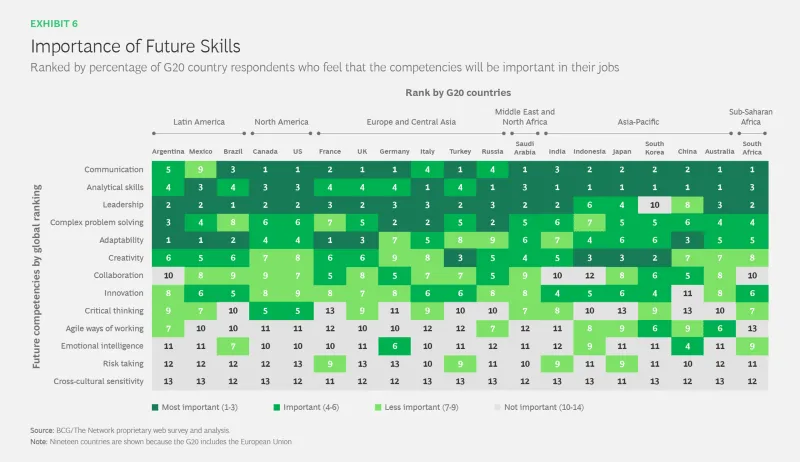
Building Block 2: Automation
When thinking of workplace automation, a few emotions are triggered.
- Fear of job loss
- Interest in new opportunities
To dig a bit deeper into the first trigger, we find that some of the job-fearing loss stems from an idea that sounds quite Hollywood-esque, namely, the widespread belief that in the next 50 years robots will take over our jobs. According to research by Pew Research Center, global consensus shows that many countries are concerned that a large portion of their job will be replaced by machines.
In the following poll, we see that in Greece, over 50% of those polled believe that robots are definitely taking over in the next 50 years. Respondents in South Africa (45%) and Argentina (40%) hold the same belief. Americans are somewhat less likely than other nations to believe that robots will replace human jobs in the next 50 years.
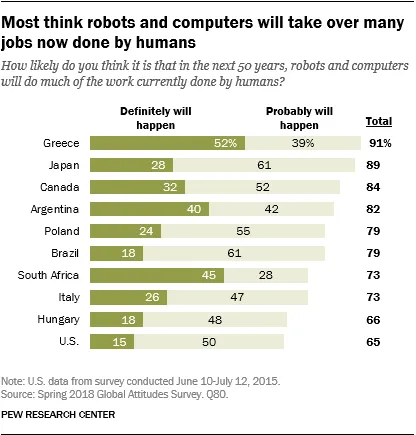
However, this notion is not (entirely) true. Let’s look a little deeper into the subject.
Around the world, new technologies are rapidly transforming the nature of work as we know it. Advancements in robotics and artificial intelligence are displacing jobs in various sectors (in manufacturing and customer service, for example).
From an economic perspective, we are seeing higher productivity and overall growth. But what we can’t overlook is the complete disruption this causes in the workplace, which has some serious repercussions for employees, employers, and customers.
One of the most prominent examples of this is the use of AI in the workplace.
Artificial Intelligence
Whether you are aware of it or not, AI has already been applied to repetitive and mundane tasks in our day-to-day. And AI doesn’t just free up our time – it also makes more accurate observations and analysis of data for better decision-making.
In the future, AI applied to “non-routine work” has been predicted to be more likely to assist humans than replace them. In fact, a human-machine combination is set to drive the future workforce, allowing humans and AI-driven machines to perform more effectively.
According to Gartner research, “AI-related job creation will reach two million net-new jobs in 2025.”
Needless to say, organizations that quickly embrace AI in the workplace will become more efficient and increase productivity at a much faster pace than those that don’t.
Benefits of Workplace Automation
Although many are still hesitant about automation in the workplace, statistics show that there are more advantages by embracing it sooner rather than later. Here are four key benefits that come with automation in the digital workplace.
1. More human work environment:
By allowing AI to take over repetitive, mundane tasks, people have more time to focus on specializing their skillset. Workplace automation means time is made available to leverage human potential and strengths, such as creativity, critical thinking, communication, and collaboration.
2. Increased engagement
Automation optimizes processes, allowing staff to fully leverage their talents and excel at a faster rate. More engagement generally means a higher likelihood of employee satisfaction and a lower chance of turnover.
There are also more opportunities for skills training (as mentioned before) to increase technical skills and to identify where any other potential skills are lacking.
3. Higher productivity
Business process automation increases accountability and speeds up internal processes.
4. Customer satisfaction
Providing real customer support gives your team more time to troubleshoot and optimize your customer experience, whether it is through chatbots or email marketing.
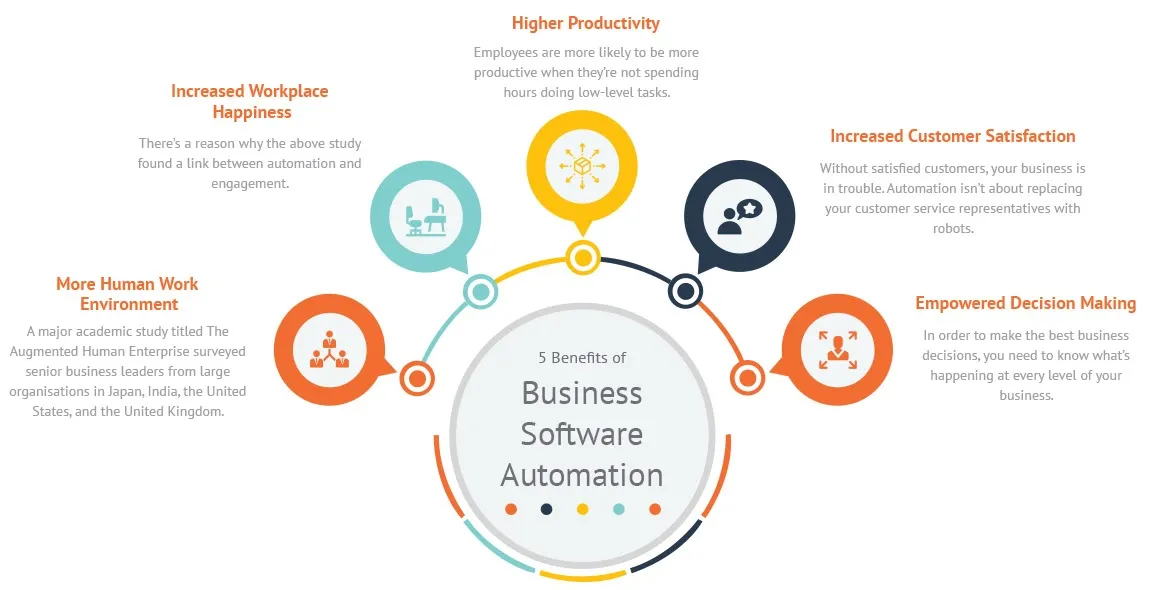
Large corporations already have plans in place to combat the effects of automation in the workplace. For example, Amazon announced that it will spend $700 million to train about 100,000 workers in the US by 2025 to help them move into more highly-skilled jobs. The big reason behind this large investment is the fact that Amazon acknowledges that “advances in automation technology will handle many tasks now done by people”.
Successful workplace automation requires a change in mindset. Automation is an asset to support innovation in the workplace as it optimizes the characteristics of humans while leveraging the capabilities of machines.
New research from McKinsey estimates that – depending on the speed of adoption – between almost zero and 30 percent of the hours worked globally could be automated by 2030.
By embracing automation with new opportunities, your organization will eventually shift from the mindset of “I don’t want to lose my job” to “I am excited to learn new things”.
Automation opens the door to new opportunities that empower people to use their talents to the fullest.
Building Block 3: Digital Workforce Enablement
Perhaps you already work for a fast-paced, innovative company and you are willing to undergo big changes and adjustments in digital processes for the future of the business. For many modern companies, just this statement alone is already a huge shift in the direction towards future innovation. But why innovate at all? Where does this motivation come from?
The drive for change in the workplace is deeply rooted in the desire to radically improve the performance at a company.
But more often than not, organizations are still unable to capitalize on their huge talent pool even after planning out and implementing innovation strategies. Where is the disconnect?
The point is, engagement does not always equal enablement. In fact, it works the other way around. Enabled employees become engaged employees.
When organizations provide all of the tools and opportunity an employee needs to perform, they are more likely to trust that their organization wants them to succeed and they can better track their contribution to the organization’s success.
Digital enablement is a big part of digital transformation. As many organizations embark on their digital transformation journey, digital enablement is the middle ground where technology and the different work methods collide.
We now live in an increasingly digital world where work is no longer a physical office space that we go to in order to perform our daily tasks and responsibilities. Instead, work has become location agnostic. Employees can work from anywhere and anytime.
As a result, digital workplaces are increasingly becoming the future of work as they give employees the flexibility to work from any location without losing out on productivity.
A digital workplace lets your organization:
- Communicate and collaborate without delay
- Digitize and modernize business processes, transforming them into streamlined workflows
- Improve digital dexterity
- Be more agile with emerging technologies
While this all may sound obvious, digital enablement for the workplace is no easy feat. It requires leadership buy-in and it requires a lot of change in organizations.
Digital enablement for your workforce eliminates barriers to innovation and increases your organization’s capacity to use digital tools, lowers resistance to change, and improves digital efficiency.
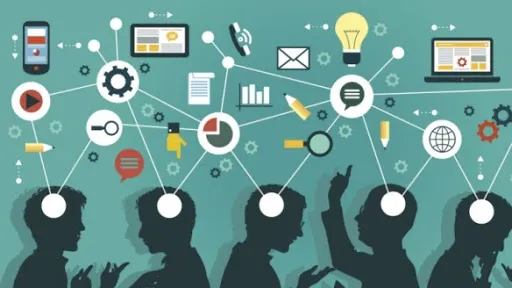
Building Block 4: Digital Efficiency
Continuously adjusting to the constant and fast-paced changes in the work environment can, in a way, be compared to running a marathon. There are those who set the pace, those who lead, those who try to keep up and cross the finish line, and those who lag behind or eventually pull out of the race.
For the marathon runners who either win races or come close to it, they have to train hard by putting in consistent effort, time, and dedication. They have to adjust to changes too, whether it be training in different climates, adjusting to nutritional needs, or coming up with new and improved training plans.
But one of the main components of successful training plans is efficiency. Athletes need to have well-planned and structured training plans and races. And when it comes to the actual race, the runner must achieve maximum output without wasted effort.
And this is how it needs to be for companies building for the workplace of the future: Achieving maximum productivity with little wasted effort and expense and having employees who work together in well-organized and highly competent ways.
But how can you ensure an efficient and productive workforce with thousands of employees perhaps scattered in different locations around the world? And what happens when you need to introduce new software in your company to keep up with the latest technologies and processes?
The Digital Adoption Revolution
As already mentioned above, operational efficiency in software is an absolute must for any employee in any company. Companies simply cannot run efficiently if employees do not know how to successfully work with the digital tools they’re required to work with.
An article from Rallyware states that the “bedrock of fast market adaptation is the right mix of technology and human capital”. But when talented employees can’t work with the technology, then companies experience unnecessary setbacks.
Therefore, achieving full digital adoption – i.e. employees fully leveraging digital assets – in order to achieve maximum operational efficiency in software now needs to be one of the concrete building blocks of the workplace of the future.
To be part of the digital adoption revolution, many companies are increasingly looking to digital adoption platforms to train their employees on how to use software applications as efficiently as possible.
A recent article on digital adoption from Forbes talks about challenges connected to digital adoption. The author suggests that for those in charge of employee training and onboarding, they should “arrange for proper personalized demos for each member of the team and really show them how they can fully leverage the new tool they have at their disposal”.
However, the problem with such an approach in getting employees to learn new software is that it is neither continuous nor synchronous. Watching a one-off video is not going to teach an employee how to make full use of the features of the software, and they’re more than likely to forget what they’ve learned from the video soon after watching it.
This is why DAPs are becoming the must-have solution for employee training and software adoption. DAPs, like Userlane, provide continuous performance support and synchronous learning via onscreen interactive guidance. Employees are guided logically and step-by-step in the software they’re working with. This (a) allows them to learn at their own pace in their own time from any location and (b) ensures that they navigate and understand each and every feature of the software application no matter how complex the feature may be.
DAPs are designed to maximize software adoption. If all employees, no matter where they are in the world, learn new software via a DAP, companies will experience a huge ROI on their software investments as well as a highly efficient workforce.
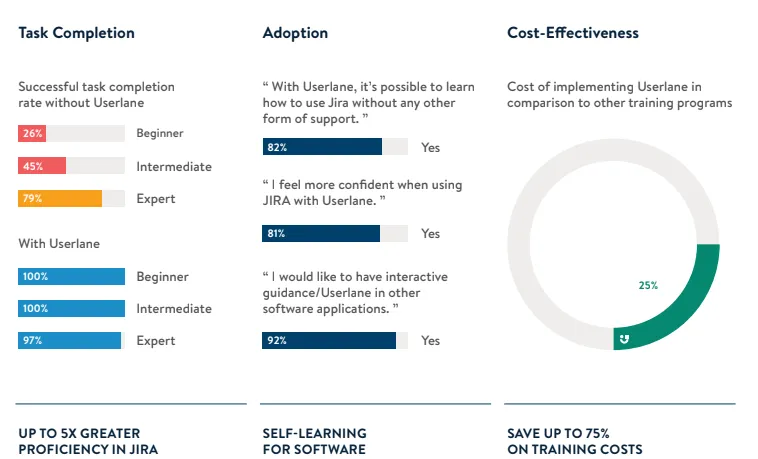
Continuous Learning and Development Opportunities
But, of course, efficiency isn’t just tied to being able to use technology. As much as the future of automation is here and AI will be able to fulfill certain job tasks, the human aspect of being efficient will always come into play.
A dictionary definition of efficiency states that a person is efficient when working in a well-organized and competent way. But being competent in what we do work-wise isn’t something that we know implicitly. We’ve either learned the skills we require to work in our current positions on the job, by studying a degree or taking courses, or by learning from our colleagues.
This means that efficiency is explicitly connected to continuous learning and development opportunities, which, in turn, is connected to employee engagement and productivity.
In Rallyware’s post on workforce reskilling, it is emphatically stated that 84% of companies fail to reskill their workforce. The article also quotes research from PwC’s 2019 Annual Global CEO Survey, which revealed that 80% of CEOs see the lack of skills as the main threat to business growth, as well as research from McKinsey, which stated that “66% of executives see upskilling and reskilling of their workforce as one of the top ten priorities with 62% believing that they will need to reskill more than 25% of the workforce between now and 2023.”
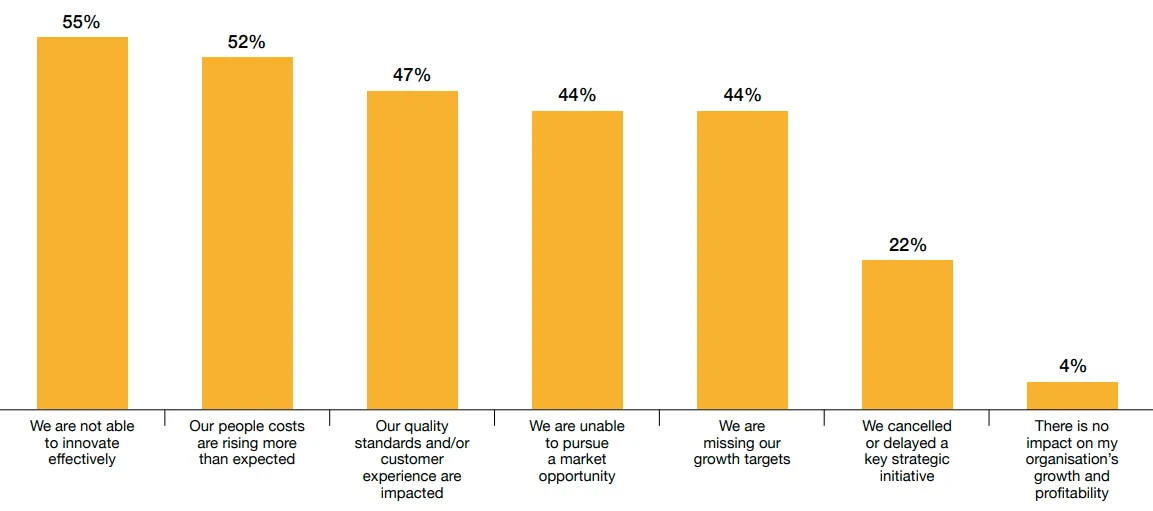
Yet, the same research from McKinsey points out that only a mere 16% of companies feel as though they are adequately prepared to initiate upskilling their workforce. Reasons for this low figure include a major lack of money and a lack of know-how where companies simply do not know how to begin tackling the reskilling challenge.
So, what do companies actually need to do to address this challenge? According to Rallyware and our own research, your organization can improve overall job efficiency by:
- Homing in on critical areas where talent is needed and then creating appropriate reskilling programs for this with incentive programs. (Learning Management Solution Pluralsight offers two great features, namely Roll IQ and Skill IQ. These features help employees and teams identify critical skills gaps and allow users to take an assessment of their skills in various fields and software applications).
- Focusing on necessary skills and not job roles. Here, you can see what existing workforce skills you have and offer personalized learning to reskill employees. Once again, LMS solutions provide valuable data and analytics into employee skills performance, thereby highlighting what is needed and where there is room for reskilling and upskilling opportunities.
- Investing in learning experience platforms, whether it be a modern LMS solution or a DAP, and making sure your L&D teams are up-to-date with their technical skills too! Modern learning platforms provide efficient as well as highly targeted and personalized training, making your employees both highly-skilled and competent, allowing your company to thrive in the market and adapt to changes, whether unforeseen or not.
- Listening to your employees and involving them in some of the strategic decisions your company takes. This will not only empower them and make them feel appreciated, but it will also give you some fresh ideas and new perspectives on how to tackle current and future challenges.
- Challenging your employees and giving them the support they need. For example, Adobe gives its employees challenging projects while offering support. This, naturally, leads to innovative new ideas and products and also helps employees build more skills by learning from each other.
According to the National Center on the Educational Quality of the Workforce, an increase in employee productivity depends more on efficient training than on upgraded equipment. This ties back to the beginning of this section where: (a) Technology is only valuable if employees are fully operational in it and (b) training shouldn’t be done for the sake of training, it needs to be efficient, well-structured, and strategic.
And lastly, to sum up this section, keep in mind that, based on research from IBM, for every dollar spent on training, there is a return of $30 in productivity.
The writing is on the wall: If you want an efficient and productive and skilled workforce, you absolutely MUST focus on ongoing employee training and providing continuous learning and development opportunities.
Ready for the Workplace of the Future
Continuous training and re-skilling play a crucial role in successful change processes for the workplace of the future.
For now, consider what the predominant workforce looks like compared to your ideal workforce and aim to create learning strategies that are immersed in opportunity for development.
And as a leader in learning, you also need to prepare for more change affecting your business strategy as digital transformation continues to influence our working environment. For this reason, it is important that you push to break down silos and encourage stakeholders to make learning a priority for the entire organization.
To summarize what’s been said in this post, organizations need to prioritize:
- Listening to the learners regarding their experiences and preferences on how they receive and gain knowledge.
- Diving deeper on analytics to discover how employees prefer to learn in order to boost engagement and secure knowledge retention and talent.
- Treating learners more like customers because increasing employee satisfaction means increasing employee retention.
- Providing on-demand support for employees working with software.
Regardless of the industry, the easiest way to support your learning efforts within your organization is to keep it simple and always come back to the “why” of your L&D efforts. Proper, well-developed, and strategic learning programs are an asset to every organization, and they will without-out-a-doubt take your organization’s productivity to the next level.
But the learning programs available aren’t of any use if they aren’t being utilized. The endless opportunities and solutions technology provide have immense power to transform your learning and training experience, but this can only happen if you are able to leverage the solutions properly.
Achieving full digital adoption means your business will be able to fully utilize every digital tool available to optimize your business processes.
Achieving full digital adoption begins with a digital adoption platform (DAP).
Userlane is a next-gen DAP that provides real-time support to all software users with step-by-step guidance. By implementing a DAP such as Userlane, you will:
- Empower employees to be self-sufficient in software applications
- Reduce procedural mistakes in software
- Ensure compliance
- Reduce resistance to change
Implementing a digital adoption platform increases the success of innovation initiatives through continuous training and performance support.
Make sure that your organization will be one of the most successful organizations of the future by achieving full digital adoption, adapting more quickly, moving faster, embracing career demands, remaining agile, and accepting failure as part of the journey.
If you want to boost the success rate of your innovative change processes and provide modern support to your employees at the right time, then a digital adoption solution is the right choice for you. Reach out to us for more information!

